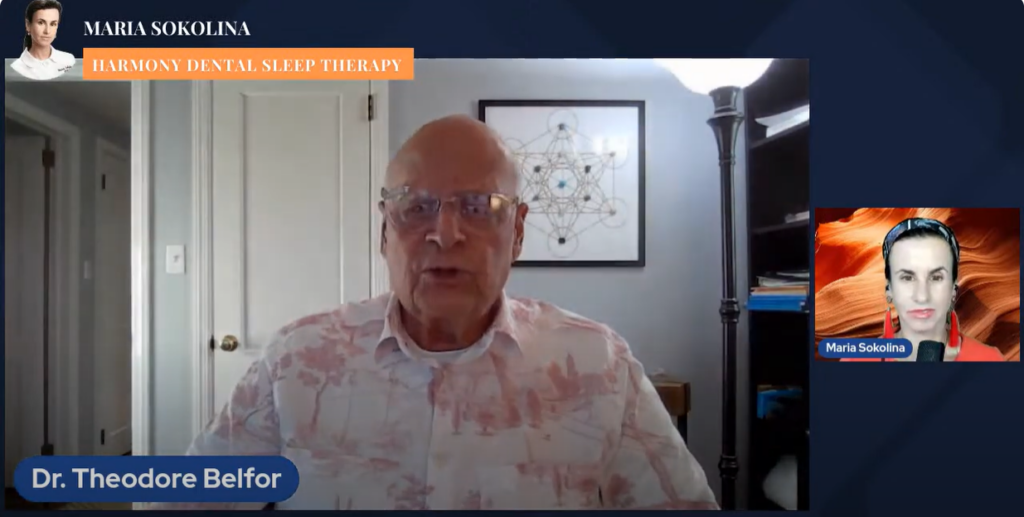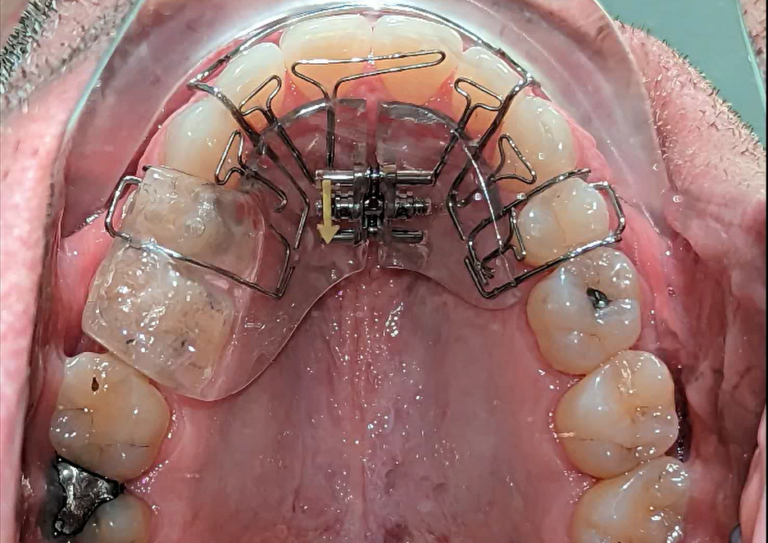
Embarking on a dental career after graduating from two dental schools, I was puzzled by persistent questions that seemed to be missed during my education. Why do so many children and adults need braces now? Was the answer simply genetics? Why did individuals with impeccable oral hygiene habits still suffer from bleeding gums in the anterior part of the mouth? And the enigma that confused me the most was the teeth-grinding epidemic.
As I experienced it, dental education was mechanical, a series of procedural steps to address a specific issue. The prevalent approach was fixated on the “how” – how to do a class I composite, perform a cleaning, and crown a tooth. However, the “why” remained elusive, and my inquisitive mind yearned for a deeper understanding of the underlying causes of these dental pathologies.
As I dug deeper into these questions, a broader landscape unfolded. The mechanical routines prescribed by conventional training were insufficient to satisfy my thirst for knowledge fully. I found myself ruminating over broader philosophical questions: Why were so many patients struggling with bruxism and sleep apnea at the same time? What links high blood pressure, allergies, narrow jaws, and dental crowding in a complex landscape of general health?
It became apparent that dental education, while proficient in teaching the mechanics of the profession, fell short in providing a comprehensive understanding of the root causes behind dental pathologies. The prevailing narrative often downgraded dentists to just technicians, who were expected to fix dental issues without understanding the intricate reasons behind their emergence.
In my opinion, this mechanical perspective posed challenges for dental practitioners and led to a potential disconnect between dentists and their patients. Reduced to the question, “How much to fix my tooth?” Dentists risked being perceived as basic “tooth mechanics.” This one-dimensional view not only impacted the professional fulfillment of dentists but also failed to empower patients with a holistic understanding of their health.
The mentorship I received from Dr. Ted Belfor was a pivotal turning point. Dr. Belfor’s teachings encompassed a spectrum far beyond the conventional mechanical approach to dentistry, offering a profound exploration into the interconnected realms of craniofacial growth, breathing dynamics, and overall health.
Dr. Belfor’s insights challenged the longstanding orthodontic practices relying on static forces for tooth movement. Through meticulous research, he unveiled the potency of cyclic troops, particularly those delivered at 0.2 Hz for 10 minutes daily over 12 days.1 This revelation was a paradigm shift, indicating that such forces could evoke more craniofacial growth and osteogenesis than traditional static forces.2
This concept immediately resonated with my practical observations, especially regarding bone growth in the middle of the palate on the upper jaw and along the tongue side next to the front teeth on the lower jaw, particularly in cases involving tongue ties.3
Dr. Belfor’s teachings underscore the significance of mechanical forces transmitted as tissue-borne and cell-borne strains. This nuanced understanding clarifies their regulatory role in gene expression, cell proliferation, differentiation, maturation, and matrix synthesis – collectively driving growth and development. The cyclical mechanical stimulation advocated by Dr. Belfor has been shown to induce osteogenic differentiation in human intraoral mesenchymal stem and progenitor cells.4
Dr.Belfor explained the Matrix theory to me.5
It is fascinating that our face and cranium grow and develop around soft tissue. The cranium grows around the brain, the orbit of the eye grows around the soft tissue of the eye, and our face grows around our breathing tube, the pharynx. The tongue’s placement also influences our growth.
All these factors have a crucial influence on the development and health of our bodies. When we breathe through our nose correctly, the positive pressure of the air develops our breathing tube, the pharynx, and face. When we swallow correctly with the tongue up against the palate, our faces can develop to their full potential. When we chew hard food like the primitive man did, the bone structure of the face has a better chance to develop to its genetic potential.
Dr. Belfor explained the impact of our contemporary environment, especially the prevalence of processed foods comprising over 60 percent of our diets. He claimed that altered chewing and swallowing patterns, linked to this dietary shift, arrest the full expression of our genes for facial development. Oral appliances and breathing exercises, as per Dr. Belfor, can stimulate gene expression, tone the airway, and enhance jaw growth. Proper craniofacial development, in turn, alleviates breathing issues, such as apnea and upper airway resistance during sleep.6
Dr.Belfor pointed out the rarity of nasal breathing in the present era of congestion and allergies, highlighting its crucial role7. Only through nasal breathing can one experience the correct effects and composition of gases that positively impact health. He emphasized the critical roles of nitric oxide (NO), carbon dioxide (CO2), and O2.
Nitric oxide regulates vascular tone and blood flow, influencing O2 supply and demand8. CO2, on the other hand, plays multifaceted roles, from relaxing smooth muscles in airways and blood vessels to impacting the Bohr effect, influencing hemoglobin affinity for oxygen9.
In our conversation, we discussed the significance of oxygen, a vital element for the survival of most living organisms. Oxygen plays a crucial role in organisms’ growth, reproduction, and energy conversion processes. Oxygen allows our cells to break down food, enabling the extraction of essential energy required for survival. The central role of O2 as a nutrient becomes evident in mitochondrial respiration, a fundamental process in cellular energy production.10
Central to Dr. Belfor’s teachings is the revolutionary Homeoblock™, a removable orthopedic/orthodontic dental appliance. This innovative device mirrors nature by reintroducing force into our chewing mechanism and replicating the signalling of the periodontal ligament – a crucial element for proper development. Dr. Belfor demonstrated, through numerous cases, that the Homeoblock™ can provide both cyclical forces and mechanical strain, fostering osteogenesis and growth in the craniofacial region.11

Dr. Belfor patiently elaborated on epigenetic concepts, dismissing confusion surrounding the idea that people stop growing after puberty and cranial bones do not move12. This revelation propelled me into further research, leading to an exploration of osteopathy and, subsequently, an encounter with the Postural Restoration Institute. Understanding the significance of the jaw as the most significant joint for balance, I learned how our teeth constantly check the delicate equilibrium required for posture.13
Dr. Theodore Belfor’s teachings have profoundly transformed my dental practice. Guided by his principles, I’ve witnessed tangible patient health improvements. Cases conducted under his direct supervision demonstrated real-time application, leading to groundbreaking results, including the resolution of sleep apnea, as confirmed by PSG evaluations.
Embracing Dr. Belfor’s teachings propelled me into the realm of epigenetic orthodontics – an ever-evolving science. The understanding that science is not a closed book but a living document of discovery fuels a commitment to continuous learning. As we explore deeper, new dimensions of knowledge emerge, unveiling pathways to refine and enhance the transformative potential of our interventions.
In my pursuit of knowledge, I’ve had the privilege of conversing with luminaries who share the same philosophical foundation as Dr. Belfor. Through insightful interviews, we’ve explored the intersections of dentistry, breathing dynamics, physical therapy and overall health. This collaborative dialogue enriches our collective understanding and contributes to disseminating knowledge that aligns with Dr. Belfor’s visionary approach.
Gratitude fills me with the unique opportunity to learn directly from the primary source – the inventor himself, Dr. Theodore Belfor. This firsthand experience transcends traditional education, offering a depth of understanding beyond textbooks. The personal connection with Dr. Belfor has been a guiding light, shaping my clinical approach and my essence as a practitioner.
The impact of Dr. Belfor’s teachings extends far beyond the confines of my practice. It resonates through the lives of his patients, who experience improved health and well-being. Moreover, the ripple effect extends to the practitioners he had trained. As these individuals carry forward the torch of epigenetic orthodontics, the positive effects cascade through the lives of their patients, creating a network of transformative influence.
In conclusion, applying Dr. Belfor’s teachings isn’t confined to the treatment room; it profoundly influences the healthcare landscape. It lives on through the healthy lives of his patients and resonates through the practices of those he has mentored. As we navigate the evolving landscape of epigenetic orthodontics, the legacy of Dr. Belfor endures, shaping a future where personalized medicine converges with holistic well-being.
His approach transcended the mechanical confines of traditional dental education, introducing a philosophy that sought to connect the dots between oral health and overall well-being. Dr. Belfor’s insights promised not just a remedy for symptoms but a profound understanding of the intricate ways the human body, a marvel of sophisticated technology, could swing into modes of self-destruction.
Dr. Belfor uncovered the importance of understanding the “why” in dentistry, breaking free from the constraints of mechanical routines, and embracing a philosophy that transcends the traditional boundaries of our profession.
References:
- Mao JJ, Wang X, Mooney MP, Kopher RA, Nudera JA. Strain-induced osteogenesis of the craniofacial suture upon controlled delivery of low-frequency cyclic forces. Front Biosci. 2003 Jan 1;8:a10-7. doi: 10.2741/917. PMID: 12456317.
- Lohberger B, Kaltenegger H, Stuendl N, Payer M, Rinner B, Leithner A. Effect of cyclic mechanical stimulation on the expression of osteogenesis genes in human intraoral mesenchymal stromal and progenitor cells. Biomed Res Int. 2014;2014:189516. doi: 10.1155/2014/189516. Epub 2014 Apr 7. PMID: 24804200; PMCID: PMC3998000.
- Peptan AI, Lopez A, Kopher RA, Mao JJ. Responses of intramembranous bone and sutures upon in vivo cyclic tensile and compressive loading. Bone. 2008 Feb;42(2):432-8. doi: 10.1016/j.bone.2007.05.014. Epub 2007 Jun 7. PMID: 18032124; PMCID: PMC4096789.
- Mao JJ, Nah HD. Growth and development: hereditary and mechanical modulations. Am J Orthod Dentofacial Orthop. 2004 Jun;125(6):676-89. doi: 10.1016/j.ajodo.2003.08.024. PMID: 15179392.
- Esteve-Altava B, Rasskin-Gutman D. Beyond the functional matrix hypothesis: a network null model of human skull growth for the formation of bone articulations. J Anat. 2014 Sep;225(3):306-16. doi: 10.1111/joa.12212. Epub 2014 Jun 30. PMID: 24975579; PMCID: PMC4166971.
- Belfor TR. Epigenetic orthodontics: facial and airway development. N Y State Dent J. 2010 Nov;76(6):18-21. PMID: 21226401.
- 7.Lin L, Zhao T, Qin D, Hua F, He H. The impact of mouth breathing on dentofacial development: A concise review. Front Public Health. 2022 Sep 8;10:929165. doi: 10.3389/fpubh.2022.929165. PMID: 36159237; PMCID: PMC9498581.
- Chen K, Pittman RN, Popel AS. Nitric oxide in the vasculature: where does it come from and where does it go? A quantitative perspective. Antioxid Redox Signal. 2008 Jul;10(7):1185-98. doi: 10.1089/ars.2007.1959. PMID: 18331202; PMCID: PMC2932548.
- Patel S, Miao JH, Yetiskul E, et al. Physiology, Carbon Dioxide Retention. [Updated 2022 Dec 26]. In: StatPearls [Internet]. Treasure Island (FL): StatPearls Publishing; 2023 Jan-. Available from: https://www.ncbi.nlm.nih.gov/books/NBK482456/
- Babcock GT. How oxygen is activated and reduced in respiration. Proc Natl Acad Sci U S A. 1999 Nov 9;96(23):12971-3. doi: 10.1073/pnas.96.23.12971. PMID: 10557256; PMCID: PMC33932.
- 11Singh GD, Diaz J, Busquets-Vaello C, Belfor TR. Facial changes following treatment with a removable orthodontic appliance in adults. Funct Orthod. 2004 Jul-Sep;21(3):18-20, 22-3. PMID: 15641449.
- Kopher RA, Mao JJ. Suture growth modulated by the oscillatory component of micromechanical strain. J Bone Miner Res. 2003 Mar;18(3):521-8. doi: 10.1359/jbmr.2003.18.3.521. PMID: 12619937.
- Michelotti A, Buonocore G, Manzo P, Pellegrino G, Farella M. Dental occlusion and posture: an overview. Prog Orthod. 2011;12(1):53-8. doi: 10.1016/j.pio.2010.09.010. Epub 2011 Jan 20. PMID: 21515232.a

